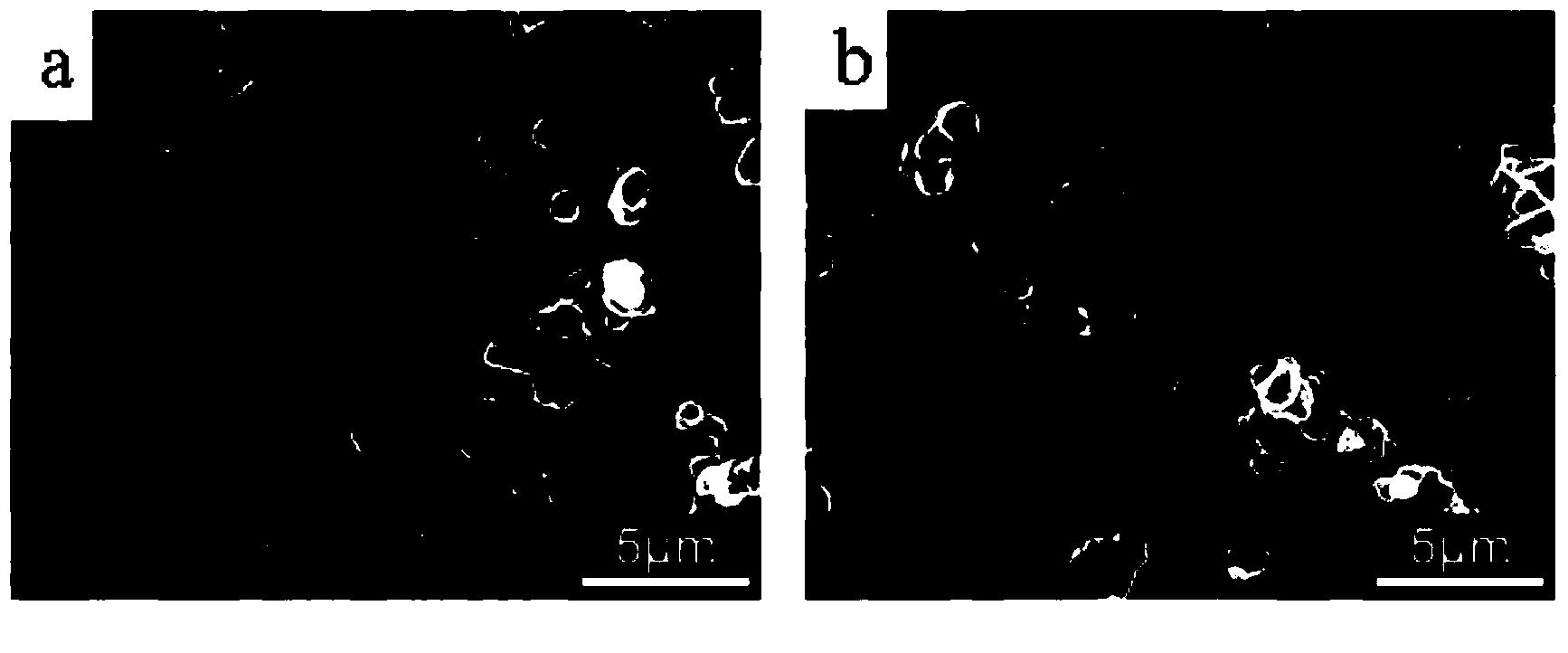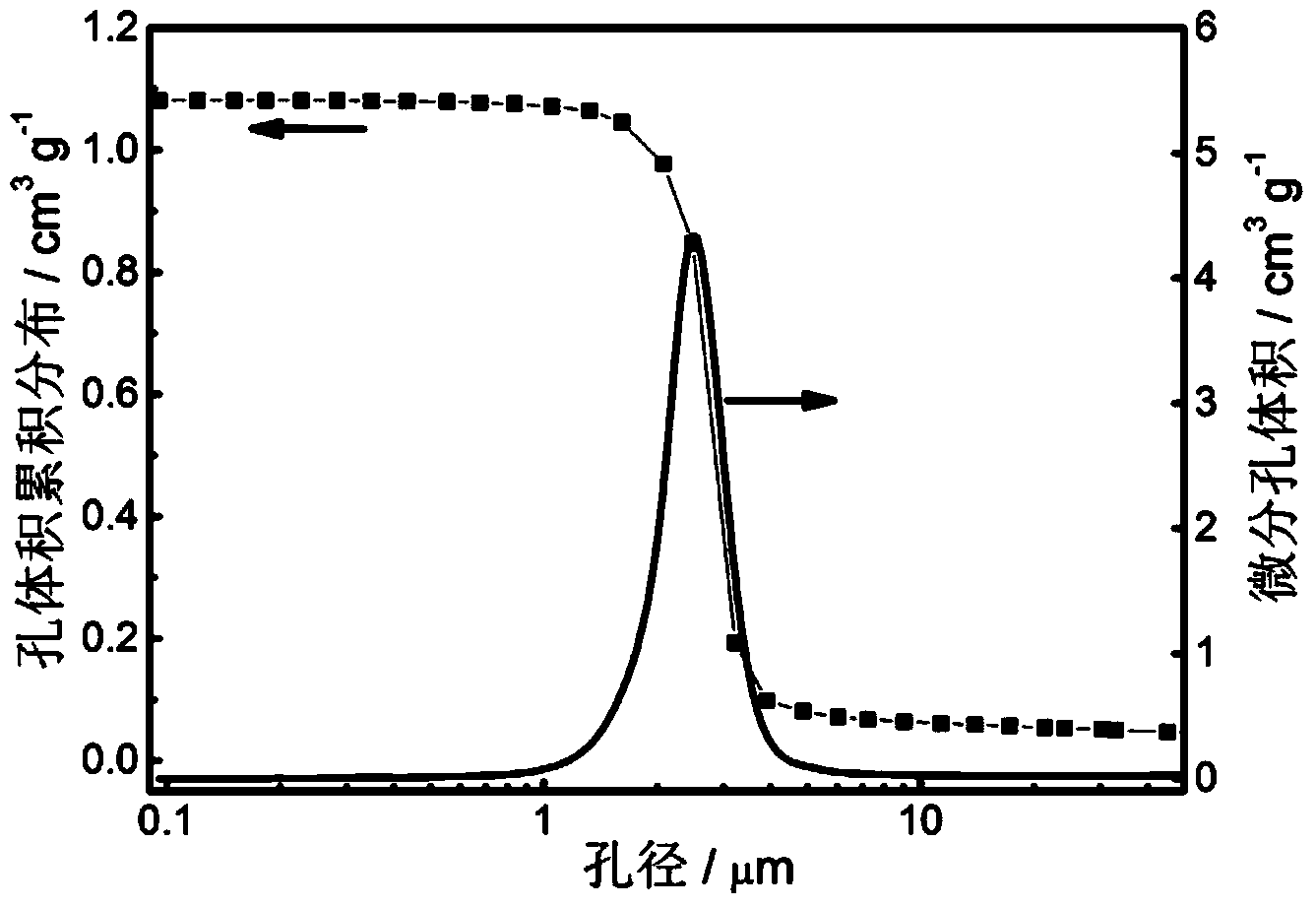Preparation method of porous aluminum titanate block
A technology of porous aluminum titanate and block, which is applied in the field of preparation of porous aluminum titanate block by sol-gel accompanying phase separation method, can solve the problems of less research on porous materials, etc., and achieves low cost of raw materials and equipment, simple craftsmanship
- Summary
- Abstract
- Description
- Claims
- Application Information
AI Technical Summary
Problems solved by technology
Method used
Image
Examples
Embodiment 1
[0027] Embodiment 1, the preparation method of porous aluminum titanate block, first prepare main raw material according to the following ratio: with 2.90g (0.012mol) aluminum chloride hexahydrate (AlCl 3 ·6H 2 O) as aluminum source, with 2.1mL (0.006mol) tetrabutyl titanate (Ti(OC 4 h 9 ) 4 ) is the titanium source, the ratio of the amount of the above two substances is 2:1, 0.08g of polyoxyethylene (PEO, average molecular weight 100000) is used as the phase separation inducer, and 0.8mL of formamide (FA) is used as the condensation agent. Glue accelerator, with 1.20g of citric acid monohydrate (C 6 h 8 o 7 ·H 2 O) is a chelating agent; Then carry out the following steps:
[0028] 1) At room temperature, respectively dissolve aluminum chloride hexahydrate, citric acid monohydrate, tetrabutyl titanate and polyoxyethylene in 6.5mL solvent (the solvent is composed of deionized water and absolute ethanol at a ratio of 0.3:1 obtained by mixing the volume ratio), stirred to...
Embodiment 2
[0034] Example 2. A method for preparing a porous aluminum titanate block, changing the heat treatment temperature in step 5) of Example 1 from 1100°C to 1300°C, and the rest are the same as in Example 1.
[0035] The appearance of the prepared porous aluminum titanate block remains intact, and there is no obvious crack on the block surface (see figure 1 ); the crystallinity is good, and the phase is a single aluminum titanate. The interior of the porous aluminum titanate block has a co-continuous macropore structure, and the pore structure does not change significantly after heat treatment, and the skeleton becomes smoother and denser (see figure 2 ). The average pore diameter of macropores is 2.8 microns, and the apparent density of the block is about 0.59 g / cm 3 , the calculated porosity is 63.3% (see image 3 ).
Embodiment 3
[0036] Example 3. A method for preparing a porous aluminum titanate block, changing the heat treatment temperature in step 5) of Example 1 from 1100°C to 1400°C, and the rest are the same as in Example 1.
[0037] The phase of the prepared aluminum titanate block is still a single aluminum titanate (the change of the phase with temperature is summarized in Figure 4 middle), but at this time the co-continuous porous structure in some areas collapsed, and cracks appeared in varying degrees on the skeleton (see Figure 5 ). The aluminum titanate block cannot meet the use requirements of the porous block.
[0038] The aluminum titanate block obtained in the above-mentioned Example 1 (heat treatment temperature is 1100°C), the aluminum titanate block obtained in Example 2 (heat treatment temperature is 1300°C), the aluminum titanate block obtained in Example 3 (heat treatment temperature is 1400°C) Body, "change the heat treatment temperature in step 5) of Example 1 from 1100°C ...
PUM
| Property | Measurement | Unit |
|---|---|---|
| pore size | aaaaa | aaaaa |
| porosity | aaaaa | aaaaa |
Abstract
Description
Claims
Application Information
 Login to View More
Login to View More - R&D
- Intellectual Property
- Life Sciences
- Materials
- Tech Scout
- Unparalleled Data Quality
- Higher Quality Content
- 60% Fewer Hallucinations
Browse by: Latest US Patents, China's latest patents, Technical Efficacy Thesaurus, Application Domain, Technology Topic, Popular Technical Reports.
© 2025 PatSnap. All rights reserved.Legal|Privacy policy|Modern Slavery Act Transparency Statement|Sitemap|About US| Contact US: help@patsnap.com



